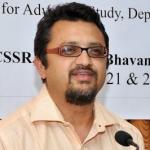Non-Communicable Diseases in India: Dispensing with the Global and Zeroing In on the Domestic

Near the end of President Obama’s recent visit to India, he recorded a radio broadcast with Prime Minister Modi. On the air, Obama indicated a desire to work on public health issues in India once his term ends. One of the issues he referred to, in particular, was obesity, a growing health challenge worldwide. Obesity contributes to several non-communicable diseases (NCDs) that have been garnering more international attention. NCDs refer to health challenges that are largely chronic, evolve gradually, and get progressively worse until tackled.





